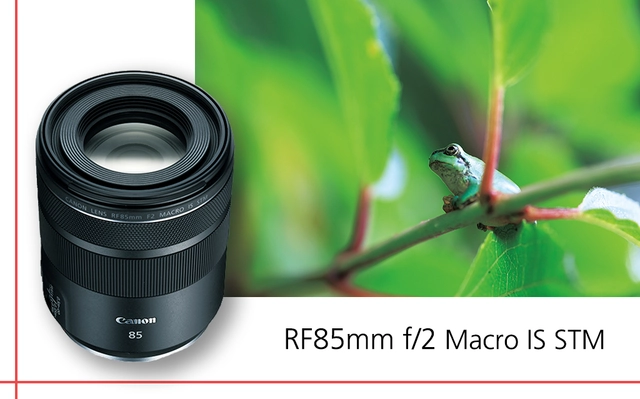10 Tips for Capturing Stunning Nature Photos
Capturing the beauty of nature on camera is an art, but there are a few hacks that can help you get the most out of your nature photography. Here are 10 tips to help you get the perfect shot:
1. Find the Right Light
Light is one of the most important elements of nature photography. Look for times of day when the light is softer and more even, such as during sunrise and sunset. Avoid harsh midday sun, since it will cast unflattering shadows and create blown-out highlights.
2. Use a Tripod
Using a tripod will help you get sharper images, especially in low light. It will also give you the freedom to experiment with different shutter speeds and aperture settings, which can help you capture a range of different effects.
3. Try Different Angles
When you're shooting nature, try to get creative with your angles. Move around and look for different perspectives that will make your images stand out. It's also a good idea to use a wide-angle lens to capture more of the scene.
4. Use the Rule of Thirds
The rule of thirds is a simple compositional technique that can help you create more visually appealing images. Imagine dividing the frame into thirds, both horizontally and vertically, and then position the main subject where the lines intersect. This will help create a balanced and visually interesting composition.
5. Include People in Your Shots
Including people in your nature shots can add a sense of scale and context to the scene. Look for opportunities to capture people in the landscape, such as hikers, campers, or even animals.
6. Freeze Motion
When shooting moving subjects, like waves or running water, you'll need to use a faster shutter speed to freeze the motion. Try experimenting with different speeds to see how it affects the resulting image.
7. Use Natural Frames
Look for opportunities to use natural frames, such as trees or rocks, to draw attention to your subject. This will also help keep the viewer's focus on the main subject and create a more cohesive composition.
8. Get Close
If you're shooting smaller subjects, like flowers or insects, you'll need to get close to get a sharp image. Use a macro lens, if you have one, or simply move in close and use the zoom on your lens.
9. Shoot in RAW
Shooting in RAW will give you more flexibility when editing your images. RAW files retain more image data, which allows you to make adjustments without degrading the quality of the image.
10. Experiment and Have Fun
The best way to improve your nature photography is to experiment and have fun. Try different angles and compositions, and don't be afraid to get creative. You never know what you might capture!
How to Use Natural Light to Enhance Your Nature Photography
When it comes to nature photography, natural light can be your best friend or your worst enemy. Knowing how to use natural light to your advantage can drastically improve the quality of your photos, while using it incorrectly can leave you with subpar images. Here are some tips to help you make the most of any lighting situation.
Look for the Golden Hour
The best natural light for nature photography comes when the sun is low in the sky, usually an hour or two after sunrise or before sunset. This time period is known as the golden hour, and it produces a soft, warm light that can give your photos an ethereal glow. If you're looking for the most flattering natural light for your nature photos, be sure to plan accordingly.
Pay Attention to the Direction of Light
When you're out in the field, pay attention to the direction of the light. If you're shooting in the morning or evening, the sun will be low in the sky, producing a soft, warm light. If you're shooting in the afternoon, the sun will be higher in the sky, producing harsher, more contrasty light. Knowing the direction of the light can help you decide how to best compose your shots.
Use Reflectors and Diffusers
Using reflectors and diffusers can help you soften and spread the light, allowing you to capture better-looking photos. Reflectors can be used to bounce light back onto your subject, while diffusers can be used to spread the light and reduce shadows. If you're shooting in harsh light, these tools can be a lifesaver.
Be Aware of Weather Conditions
Weather conditions can have a dramatic effect on the quality of natural light. Overcast days can produce a soft, even light, while windy days can cause your photos to be blurry. Paying attention to the weather can help you plan ahead and decide when you should head out to shoot.
Experiment and Have Fun
Learning to use natural light to your advantage is a skill that takes time and practice. Don't be afraid to experiment and try different lighting techniques to see what works best for you. Have fun with it and you'll be sure to capture amazing nature photos!
The Ultimate Guide to Photographing Wildlife for Beginners
If you’re a beginner photographer, you may be feeling overwhelmed when it comes to capturing the beauty of nature. Taking pictures of wild animals and landscapes can be a challenge, but it’s one that can be mastered with the right knowledge and tips. Follow our guide to learn some of the most useful hacks for nature photography.
Use the Right Equipment
Having the right gear is essential for success in nature photography. Invest in a good camera with a long zoom lens, so you can capture far-off subjects. Additionally, consider bringing a tripod and a telephoto lens, so you can take steady shots and get closer to your subjects. For the best results, look for lenses with vibration reduction or image stabilization.
Find the Right Location
Finding the perfect spot for your nature photography is key. Look for locations that have a variety of animals, plants, and other features. Look for areas with plenty of natural light, so you can take the best possible shots. You may even want to visit the same location multiple times, to capture the changing seasons or different times of day.
Know Your Subject
When photographing wild animals, it’s important to be familiar with their behavior. Take the time to observe the species before you start shooting. This will help you anticipate their movements, so you can get the best possible shots. Additionally, be sure to stay a safe distance away from the animals, so you don’t disrupt their natural habitat.
Take Your Time
It’s important to take your time when photographing nature. Don’t rush your shots, as this can lead to blurry or poorly composed photos. Instead, take the time to get the perfect angle, focus, and exposure. Additionally, be patient when waiting for the perfect moment or action shot. You may even have to wait for hours or days for a single shot.
Use the Right Settings
Having the correct settings on your camera can make a huge difference in nature photography. Learn how to use your camera’s aperture, shutter speed, and ISO settings to get the best results. Additionally, consider using the manual or semi-automatic exposure modes to get the most control over the settings.
Try Different Techniques
Experimenting with different techniques can help you get more creative with your nature photography. Try panning shots to capture movement, or use aperture priority to capture the beauty of a landscape. Additionally, consider using burst mode to capture action shots or multiple images in a single frame.
Learn from Your Mistakes
It’s inevitable that you’ll make mistakes when photographing nature. Learn from these mistakes and use them to improve your skills. Don’t be afraid to experiment with different techniques and settings. With practice, you’ll soon be taking stunning photographs of the natural world.


